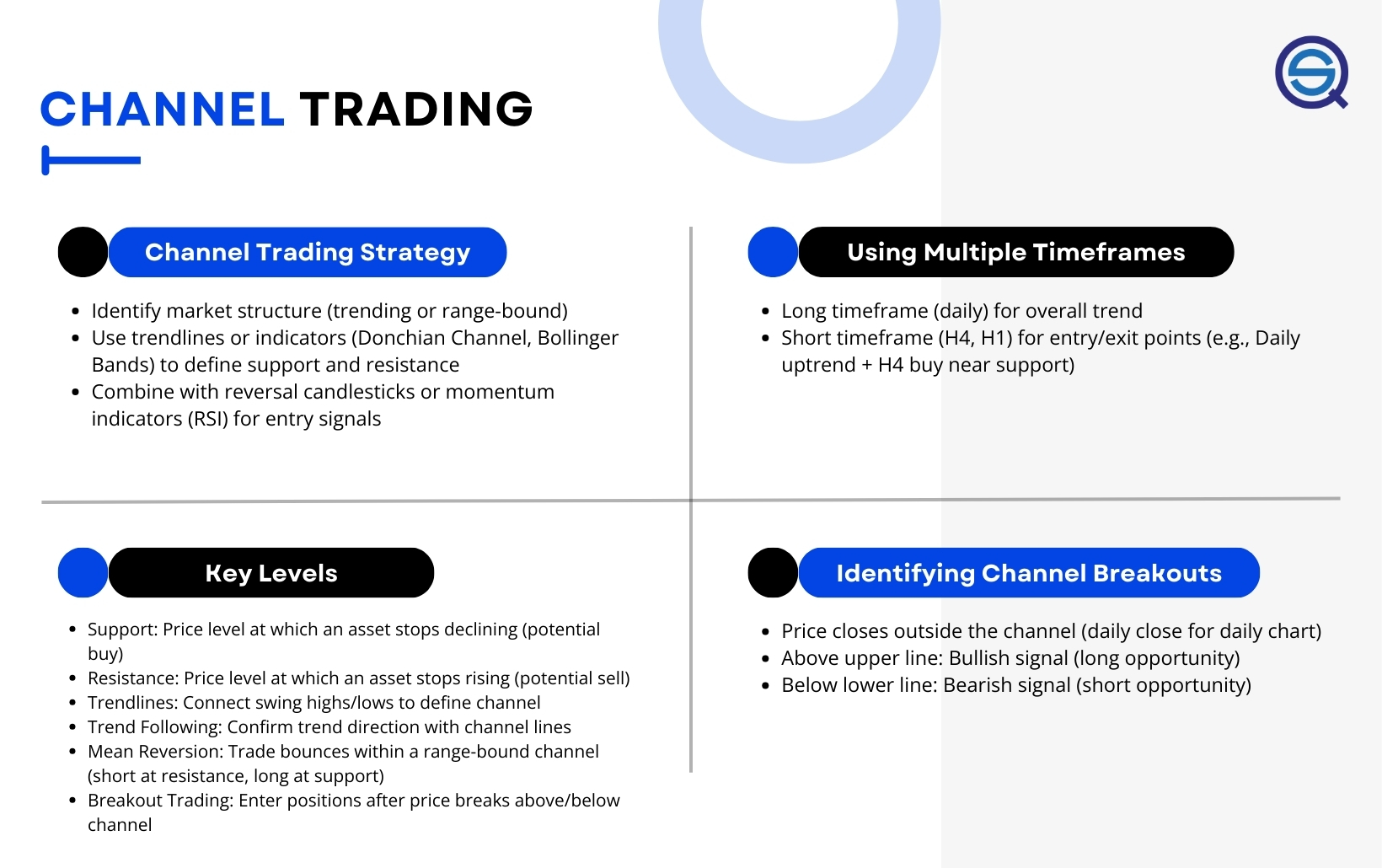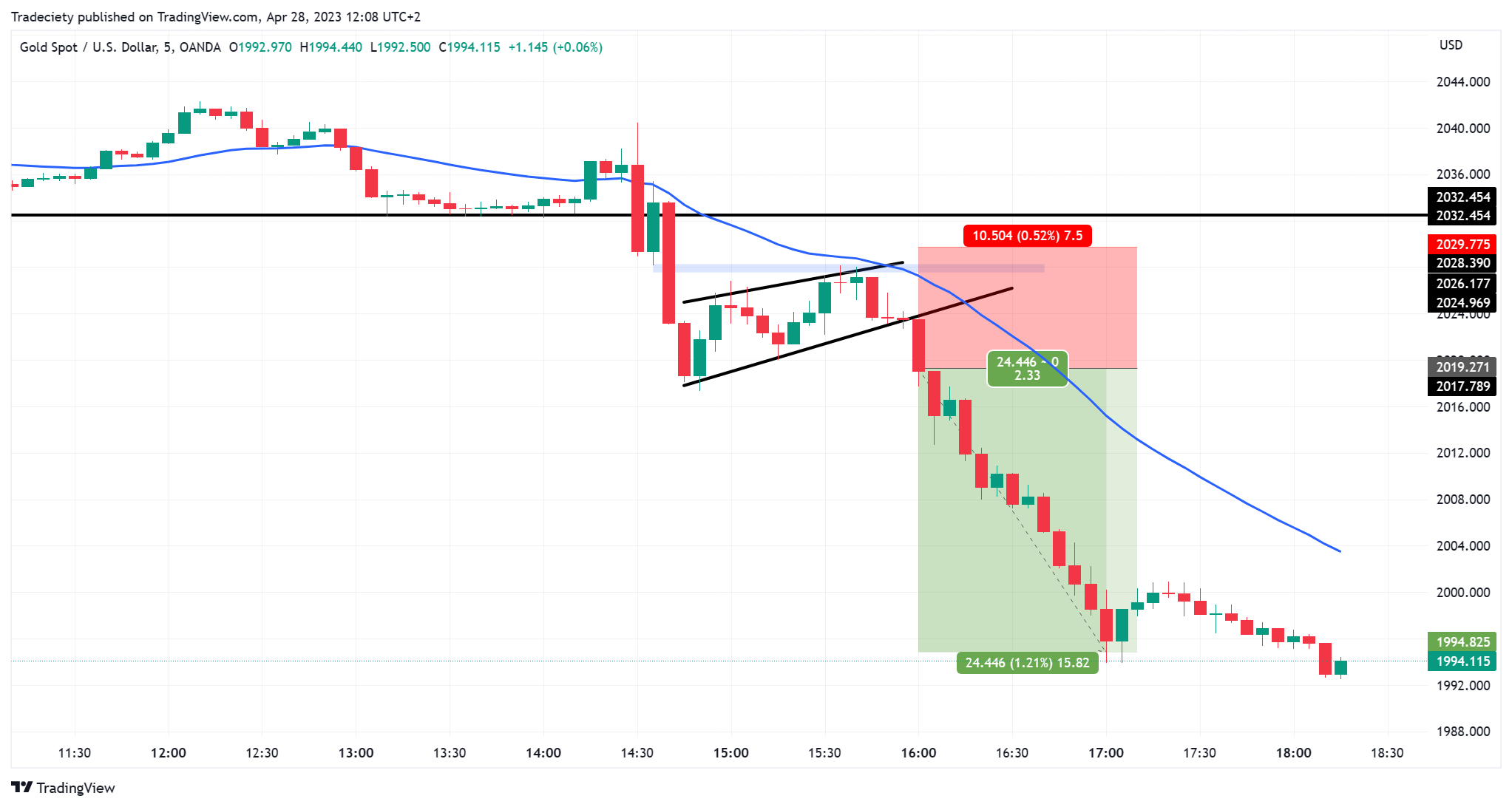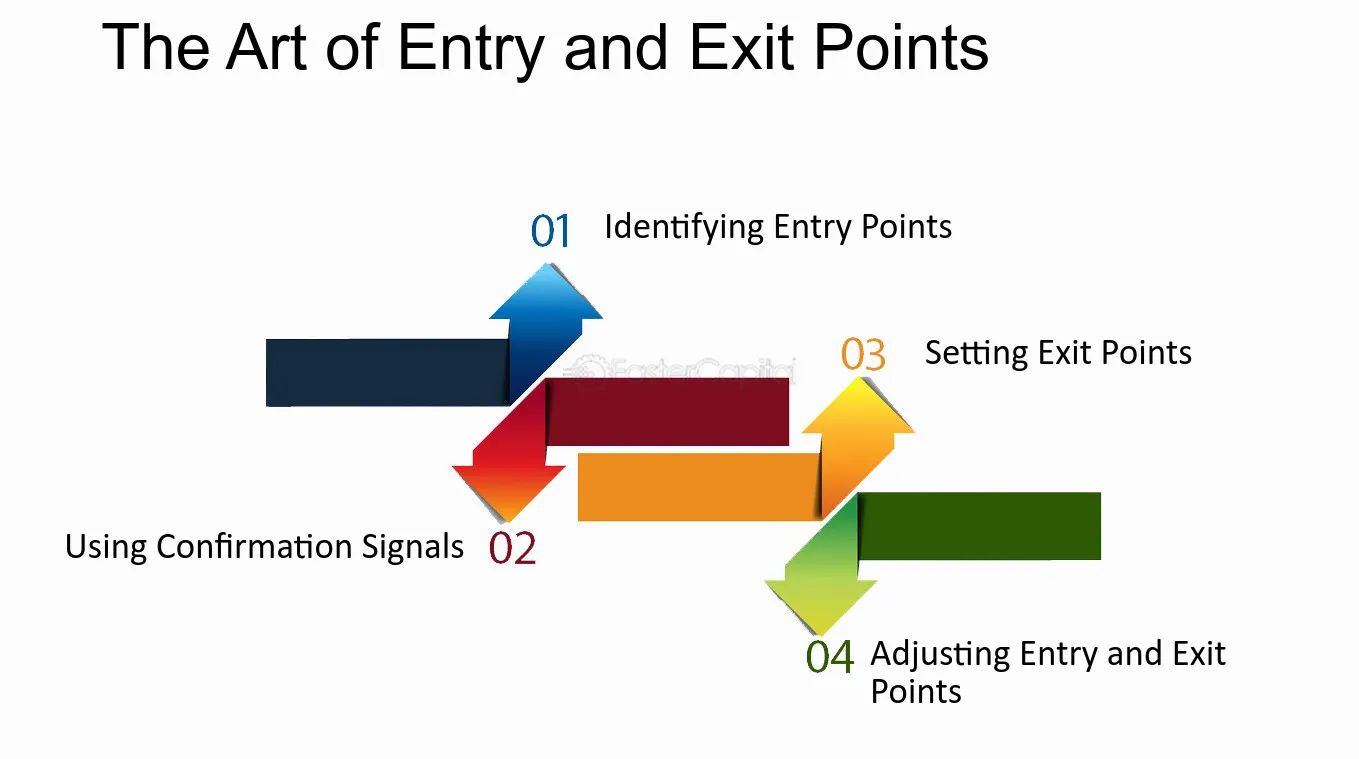Did you know that even a squirrel can teach you a thing or two about momentum trading? Just like they know when to dart for the nut, traders must master the art of timing their entry and exit points. In this article, we’ll dive deep into effective strategies for identifying optimal entry and exit points in momentum trading. We’ll explore key indicators, the significance of volume, and the role of price action, while also addressing common pitfalls and psychological factors. With insights from DayTradingBusiness, you'll learn how to adapt your strategies to different market conditions and refine your timing for maximum profit. Get ready to sharpen your trading skills!
What are the best entry points in momentum trading?
The best entry points in momentum trading are typically identified through the following methods:
1. Breakouts: Enter a trade when the price breaks above a significant resistance level with high volume.
2. Pullbacks: Buy during a temporary price dip after a strong upward move, ideally when the price bounces off a key support level.
3. Moving Averages: Look for entries when the price crosses above a short-term moving average, signaling upward momentum.
4. Relative Strength Index (RSI): Consider entering when the RSI moves above 30 from the oversold region, indicating a shift in momentum.
5. News Catalysts: Enter on strong market reactions to favorable news that could drive momentum in a stock.
Use these strategies to pinpoint effective entry points in momentum trading.
How do I identify exit points in momentum trading?
To identify exit points in momentum trading, look for signs of trend reversal or loss of momentum. Use technical indicators like the Relative Strength Index (RSI) to spot overbought conditions, typically above 70. Watch for price action signals, such as doji candles or bearish engulfing patterns, indicating potential reversals. Setting trailing stops can help lock in profits while allowing for upward movement. Additionally, consider key resistance levels where price has historically struggled to break through.
What indicators help determine entry points for momentum trades?
Key indicators for determining entry points in momentum trading include:
1. Moving Averages: Look for crossovers, especially when a short-term moving average crosses above a long-term moving average.
2. Relative Strength Index (RSI): An RSI above 70 suggests overbought conditions, while below 30 indicates oversold; consider entering when the RSI moves back from extremes.
3. MACD: Watch for MACD line crossing above the signal line for bullish momentum.
4. Volume: Increased volume confirms the strength of a price movement; enter when price rises on high volume.
5. Bollinger Bands: A breakout above the upper band can signal a strong upward momentum entry.
Combine these indicators for higher probability trades.
How can I use volume to find momentum trading entry and exit points?
To use volume for momentum trading entry and exit points, follow these steps:
1. Identify Volume Spikes: Look for significant increases in volume that coincide with price movements. High volume during an upward price move can signal strong buying interest.
2. Confirm Trends: Enter trades when volume supports the price trend. For example, if the price is rising and volume is increasing, it confirms bullish momentum.
3. Use Volume Indicators: Apply indicators like the On-Balance Volume (OBV) or the Volume Moving Average to gauge the strength of the trend. A rising OBV suggests accumulation.
4. Set Exit Points: Watch for volume declines as a potential exit signal. If the price rises but volume decreases, it may indicate weakening momentum.
5. Look for Divergence: If prices are hitting new highs on decreasing volume, consider this a warning to exit, as it may lead to a reversal.
By incorporating volume analysis into your strategy, you can enhance your momentum trading decisions effectively.
What role does price action play in momentum trading strategies?
Price action is crucial in momentum trading strategies because it helps identify effective entry and exit points. Traders analyze price movements, trends, and patterns to gauge market sentiment. A strong upward price action signals potential buy opportunities, while downward movements can indicate sell signals. By focusing on these price fluctuations, traders can make informed decisions, maximizing profits by entering during momentum shifts and exiting before reversals.
How do I set stop-loss levels in momentum trading?
To set stop-loss levels in momentum trading, identify the recent support level or a percentage of your entry price. A common approach is to place your stop-loss just below the last swing low or at 1-2% below your entry point. This limits your losses while allowing room for price fluctuations. Adjust your stop-loss as the trade moves in your favor, using trailing stops to lock in profits. Always ensure the stop-loss reflects your risk tolerance and the volatility of the asset.
What is the significance of trends in momentum trading entry and exit?

Trends in momentum trading are crucial for identifying effective entry and exit points. A strong upward trend signals a good entry point, as it indicates increasing buying pressure. Conversely, a downward trend suggests a potential exit point to avoid losses, as selling pressure intensifies. Recognizing these trends helps traders capitalize on price movements and optimize profits. Additionally, using indicators like moving averages can refine entry and exit decisions, aligning with the momentum flow. Understanding trend significance ultimately enhances trading strategy and risk management.
How do moving averages assist in identifying momentum trade points?
Moving averages help identify momentum trade points by smoothing price data, highlighting trends, and signaling potential entry and exit points. A short-term moving average crossing above a long-term moving average can indicate bullish momentum, suggesting a buy point. Conversely, when the short-term average crosses below the long-term average, it signals bearish momentum, suggesting a sell point. Traders use these crossovers, along with the distance between moving averages, to gauge the strength of the trend and make informed trading decisions.
What Are Effective Entry and Exit Points in Day Trading Momentum Strategies?
Day trading momentum strategies focus on identifying stocks or assets that are moving significantly in one direction. Effective entry points typically occur when a stock breaks above resistance or shows strong volume, while exit points are often set at predetermined profit targets or trailing stops to lock in gains.
Learn more about: What Are Day Trading Momentum Strategies?
What patterns indicate strong entry or exit points in momentum trading?
Strong entry points in momentum trading often occur when the price breaks above resistance levels with high volume, signaling increased buying interest. Look for bullish candlestick patterns, such as engulfing or hammer formations, that confirm upward momentum.
Exit points typically emerge when the price approaches overbought conditions on indicators like the RSI or MACD, or when it shows signs of reversal, such as bearish divergence. Additionally, setting trailing stops can help lock in profits as momentum shifts.
How can I optimize my entry and exit timing in momentum trading?

To optimize entry and exit timing in momentum trading, focus on these strategies:
1. Identify Trends: Use technical indicators like moving averages or the Relative Strength Index (RSI) to confirm upward or downward momentum.
2. Entry Signals: Look for price breakouts above resistance levels or pullbacks in an uptrend. Set entry orders just above recent highs for long positions and below recent lows for shorts.
3. Volume Confirmation: Ensure that entries coincide with high trading volume, signaling strong interest and validation of the momentum.
4. Exit Strategy: Set profit targets based on risk-reward ratios and trailing stop losses to lock in gains as momentum shifts. Adjust your exit if the momentum starts to fade, using indicators like the Average True Range (ATR) to gauge volatility.
5. Monitor Market Conditions: Stay aware of news and events that can influence market sentiment, as they can impact momentum shifts.
By refining these entry and exit techniques, you can improve your timing and capitalize on momentum trading opportunities.
What are common mistakes to avoid with entry and exit points in momentum trading?
Common mistakes to avoid in momentum trading include:
1. Chasing Price: Entering a trade after a significant move can lead to losses. Wait for a pullback or confirmation.
2. Ignoring Volume: Low volume during entry or exit signals can indicate a lack of conviction. Always check volume trends.
3. Poor Risk Management: Failing to set stop-loss orders can result in substantial losses. Always define your risk before entering.
4. Overtrading: Taking too many trades can dilute your focus. Stick to your strategy and avoid impulsive decisions.
5. Neglecting Market Conditions: Trading against the prevailing trend can be risky. Align your entry and exit points with overall market momentum.
6. Emotional Decision-Making: Allowing fear or greed to influence trades leads to poor judgment. Stay disciplined and stick to your plan.
7. Not Having a Defined Exit Strategy: Entering without a clear exit can lead to missed profits. Plan your exit based on target levels or trailing stops.
How does market news affect entry and exit points in momentum trading?

Market news significantly impacts entry and exit points in momentum trading by influencing price movements and trader sentiment. Positive news can trigger upward momentum, providing ideal entry points as prices rise. Conversely, negative news might lead to sharp declines, signaling exit points to protect profits or limit losses. Traders often react quickly to news, creating volatility that can either confirm or invalidate existing trends. Staying updated on market news allows traders to time their entries and exits more effectively, aligning their strategies with prevailing market conditions.
What are the best time frames for entry and exit in momentum trading?
The best time frames for entry and exit in momentum trading often range from 5 minutes to 1 hour for day trading, and 1 hour to daily charts for swing trading.
For entries, look for breakouts above resistance or pullbacks to support in trending markets. Use indicators like the Relative Strength Index (RSI) or Moving Averages to confirm momentum.
For exits, set profit targets based on recent highs or Fibonacci levels, and consider trailing stops to maximize gains while protecting profits. Always adapt your strategy based on market conditions and your risk tolerance.
How do I use backtesting to refine my entry and exit strategies in momentum trading?
To use backtesting for refining your entry and exit strategies in momentum trading, follow these steps:
1. Select a Trading Platform: Choose a platform that supports backtesting, like MetaTrader or TradingView.
2. Define Criteria: Establish clear rules for your entry and exit points based on momentum indicators, such as the Relative Strength Index (RSI) or Moving Averages.
3. Gather Historical Data: Collect relevant price data for the asset you want to trade. Ensure the data covers various market conditions.
4. Run Backtests: Implement your entry and exit strategies on historical data. Analyze how your strategies would have performed in the past.
5. Analyze Results: Look for metrics like win rate, average return, and drawdown. Identify patterns in successful trades versus unsuccessful ones.
6. Refine Strategies: Adjust your entry and exit rules based on the backtest results. Experiment with different time frames and indicators.
7. Repeat the Process: Continuously backtest and refine your strategies as market conditions change.
By following these steps, you can enhance your momentum trading by optimizing your entry and exit strategies based on data-driven insights.
What psychological factors should I consider for effective entry and exit in momentum trading?
For effective entry and exit in momentum trading, consider these psychological factors:
1. Fear of Missing Out (FOMO): It can drive premature entries. Wait for confirmation of momentum before acting.
2. Loss Aversion: Protect against holding losses too long. Set clear stop-loss levels.
3. Confirmation Bias: Avoid only seeking information that supports your trade. Analyze all data objectively.
4. Overconfidence: Be cautious of excessive confidence in your strategy. Regularly review and adapt your approach.
5. Emotional Discipline: Stick to your trading plan. Emotions can lead to impulsive decisions; discipline is key for consistent entries and exits.
6. Market Sentiment: Gauge overall market mood. Positive or negative sentiment can influence momentum and should align with your trading decisions.
By managing these psychological factors, you can enhance your entry and exit strategies in momentum trading.
How can I adapt my entry and exit strategies to different market conditions in momentum trading?
To adapt your entry and exit strategies in momentum trading based on market conditions, follow these steps:
1. Identify Trends: Use moving averages to spot bullish or bearish trends. In a strong uptrend, consider entering on pullbacks. In a downtrend, look for short opportunities on bounces.
2. Volume Analysis: Monitor trading volume. Higher volume during price increases signals strong momentum; enter when volume confirms the trend. If volume drops, be cautious about staying in.
3. Volatility Metrics: Apply indicators like the Average True Range (ATR). In high volatility, adjust your stop-loss to avoid getting shaken out. In low volatility, tighter stops might suffice.
4. Market Sentiment: Gauge sentiment through news and market indicators. Positive sentiment supports long positions; negative sentiment may warrant exiting or shorting.
5. Time Frame Adjustments: For fast-moving markets, use shorter time frames for entries and exits. In slower markets, consider longer time frames to capture larger moves.
6. Risk Management: Always set stop-loss orders based on current market conditions. In volatile markets, widen stops; in stable conditions, use tighter stops.
7. Review and Adapt: Regularly analyze your trades. If a strategy underperforms in certain conditions, adjust your approach accordingly.
By continuously evaluating these factors, you can effectively tailor your momentum trading strategies to suit varying market conditions.
Conclusion about Effective Entry and Exit Points in Momentum Trading
In conclusion, mastering effective entry and exit points is crucial for successful momentum trading. By leveraging indicators, volume analysis, price action, and trend recognition, traders can optimize their strategies for maximum profitability. Additionally, understanding market psychology and adapting to varying conditions enhances decision-making. For tailored insights and support in refining your trading approach, DayTradingBusiness offers valuable resources to elevate your momentum trading skills.